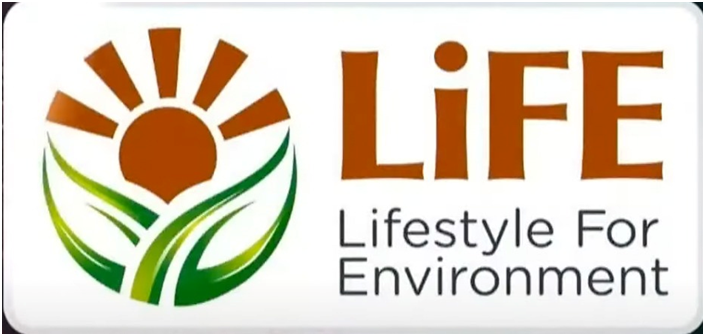Mission LiFE: Indias action plan for the world to shun mindless consumerism (GS Paper 3, Environment)

Context:
- The human race is plundering Planet Earth at a pace that far outstrips its capacity and ability to support life.
- A recent study says that if the current rate of consumption were to continue, by 2050, humans would need two more planets, in addition to the Earth, to continue to exist.
Mission LiFE:
- Recently, the Prime Minister Narendra Modi unveiled the action plan for Mission LiFE (Lifestyle for Environment), an India-led global mass movement that will nudge individuals and communities for action to protect and preserve the environment.
- PM Modi had first given the mantra of LiFE to the world in 2021 at COP 26 in Glasgow.
- The 10 heads of states, including France, UK, Guyana, Argentina, Mauritius, Madagascar, Nepal, Maldives, Georgia and Estonia extended support to the India-led LiFE movement.
Participative process:
- Environment protectionhas for far too long been perceived as a policy issue by the general masses. There has been a perception that only national governments and international organisations can do something to protect the Earth and environment.
- But Mission LiFE makes environmental protection and conservation a participative process and recognises the importance of each effort, to save the environment both at the level of the individual and at the level of the community.
- What threatens human existence more than anything else is the pace at which it is producing and consuming. The consumption pattern of the world is mindless and pays scant regard to the environment.
- Mission LiFE tries to remind the world that the mindset of “use and throw” must immediately be replaced by “reduce, reuse and recycle” so that our scarce resources are not overexploited and the world doesn’t crumble under the weight of all the waste that it is generating by the second.
India’s performance:
- In India, the cultural ethos of limiting needs and treating the environment and its resources with reverence has produced very visible results. India constitute 17 per cent of the world’s population, but its contribution to global carbon emissions is only four per cent.
- Against the developed world’s carbon footprint of four tonnes per head, the carbon footprint of an average Indian counts to only 1.5 tonnes.
Global alliances led by India:
- Despite not being part of the problem, with numerous global initiatives such as the International Solar Alliance, the One Sun One World One Grid initiative, and the Coalition for Disaster Resilient Infrastructure, India has taken the lead in presenting and building solutions for the world by bringing the global community together.
- The need to build these global alliances to fight climate change stems from the understanding that only collective action can save the world from the vagaries of climate change that are increasingly becoming a reality and are rising in ferocity.
India-UN partnerships:
- Mission LiFE stems from the thought that every little effort to protect the environment counts and the world can benefit from India’s ideas and experiences in this area.
- By working together with the United Nations in this regard, the Prime Minister has sought to ensure the message reaches far and wide. India-UN partnerships have already presented fruitful results for the world. An example of this, as the PM stated, has been seen in the celebration of International Yoga Day on June 21. The world is now benefiting from Yoga on an unprecedented scale.
- The decision to celebrate 2023 as the International Year of Millets marks another golden chapter in the India-UN partnership which has numerous positives for the world to reap from.
- In the same sequence of India offering knowledge from its religious and cultural ethos to the world, Mission LiFE aims to pull the world away from a “mindless and destructive” consumerist approach towards a “mindful and deliberate utilisation” of resources. It is also, at the same time, an effort to prevent India from heading that way.
Way Forward:
- India is already working towards building a circular economy and moving towards a stage where all our energy requirements are met through the use of renewables.
- Indian policies are all aligned towards ensuring sustainable development, where nature is not disregarded for development but where the most marginalised are not left to their destiny by denying them development.
- Mission LiFE is a philosophy which shows how this can be made possible. It shows the power of small efforts to make big impacts. It believes in the individual’s capacity to change the world.


